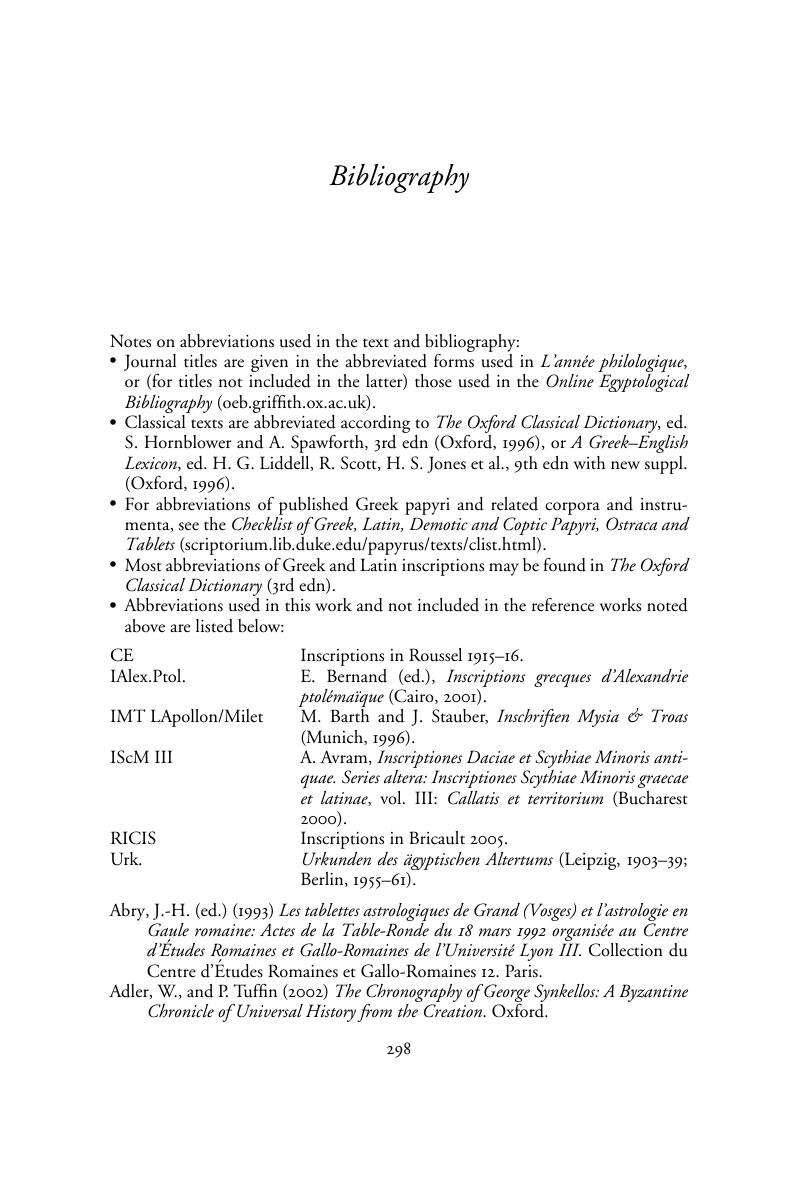Book contents
- Frontmatter
- Contents
- List of figures and table
- Acknowledgments
- Introduction: the absence of Egypt
- 1 Herodotus and an Egyptian mirage
- 2 Luculentissima fragmenta
- 3 The Delian Sarapis aretalogy and the politics of syncretism
- 4 Thessalos and the magic of empire
- Epilogue
- Appendix I Text and translation of the Delian Sarapis aretalogy (IG XI. 1299)
- Appendix II Translation of the Madrid manuscript of Thessalos, De virtutibus herbarum (Codex Matritensis Bibl. Nat. 4631)
- Appendix III Dating the composition of Thessalos, De virtutibus herbarum
- Bibliography
- Index
- References
Bibliography
Published online by Cambridge University Press: 05 July 2011
- Frontmatter
- Contents
- List of figures and table
- Acknowledgments
- Introduction: the absence of Egypt
- 1 Herodotus and an Egyptian mirage
- 2 Luculentissima fragmenta
- 3 The Delian Sarapis aretalogy and the politics of syncretism
- 4 Thessalos and the magic of empire
- Epilogue
- Appendix I Text and translation of the Delian Sarapis aretalogy (IG XI. 1299)
- Appendix II Translation of the Madrid manuscript of Thessalos, De virtutibus herbarum (Codex Matritensis Bibl. Nat. 4631)
- Appendix III Dating the composition of Thessalos, De virtutibus herbarum
- Bibliography
- Index
- References
Summary

- Type
- Chapter
- Information
- Egypt and the Limits of Hellenism , pp. 298 - 339Publisher: Cambridge University PressPrint publication year: 2011



